The problem with most landscape photography is that not enough preparation is put into setting up the shot before it is taken. These tips are meant to give the photographer some things to think about before releasing the shutter.

Photo by Indrek Torilo. ISO 100, f/6.3, 1/250-second exposure.
1. Depth of Field
Most professional landscape photographers want everything in the shot to be equally in focus. This is done by increasing the depth of field (making it deeper).
Aperture controls the depth of field. The higher the aperture setting (e.g. f/16), the smaller the aperture opening will be. The smaller the aperture opening, the deeper the depth of field will be (although the smallest apertures such as f/22 can cause diffraction). F/8 to f/16 is a good range.
2. Use a Tripod
A deeper depth of field usually requires the shutter to be open longer for proper exposure.
The slightest shake of the camera while the shutter is open can cause unwanted blur. Using a tripod greatly decreases the chances of this happening.
3. Framing
We all have those busy vacation photos with so much in the shot that no-one can quite tell what the subject is. This is usually caused by distractions in the landscape. These distractions can be anything from people to dominant colored buildings.
These distractions should not dominate the shot. Use the viewfinder to crop out these distractions. If they are not in your viewfinder they will not be in the photograph.

Photo by Lenny K Photography.
4. Foreground
Foreground is often not given the credit it is due in landscape photography. It should be used to help guide the viewer into the shot.
Look around at a landscape that you are interested in and see if there is anything that creates natural lines that lead into the scene. The foreground should not dominate the landscape, though, unless it is the actual subject of the shot.
5. Lighting
Most people wait for a nice sunny day before they grab their camera and head out. The photographers that do this lose out on some great landscapes.
Clouds can greatly enhance the mood of a landscape. Clouds themselves can also be made the subject of the landscape.
Dusk and dawn are also great times to shoot landscapes. Shadows are sharper and create more contrast in the scene. The light may even be a different color and cast a golden hue over the land. After all, who doesn’t like a sunset?

Photo by Filipe Soares. ISO 200, f/5, 1/3200-second exposure.
6. Perspective
Sometimes it is possible to take a seemingly ordinary scene and create a dynamic landscape just by moving go a different spot.
Try changing the perspective of the shot. Kneel down low and shoot at an upward angle. Get on higher terrain and shoot down. Move the horizon around the viewfinder a bit.
7. Composition
Use the rule of thirds whenever possible. This is done by dividing the scene shown in the viewfinder into 9 equal parts (like a tic-tac-toe board).
Where the lines intersect is where the points of interest should be positioned. Horizon lines should be placed on the top or bottom horizontal line.

Photo by Carlos M. M. ISO 100, f/10, 1/200-second exposure.
Do not forget, the only thing that shows up in the photograph is what is seen through the viewfinder. So make that little area look as interesting as possible.
I hope you have enjoyed my 7 Tips for Better Landscape Photography.
About the Author:
Jonnie is a hobbyist photographer that helps new photographers learn the fundamentals of photography with his Landscape Photography Tips and more.
Like This Article?
Don't Miss The Next One!
Join over 100,000 photographers of all experience levels who receive our free photography tips and articles to stay current:

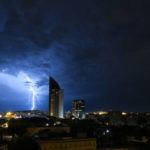
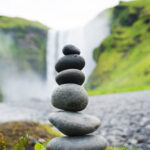
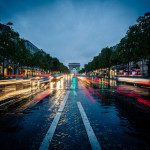
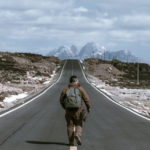
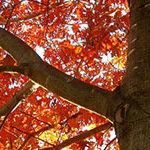
I would like to thank you for sharing this great article. It helps me a lot
Very useful information
Thanks for sharing
Loved this tips.
Please make an article on Portrait mode also.
Thanks
Thank you for the gteat photography tips. It helps me as I am learning photogrpahy.
I would like to add that Even post processing is one of the important factor get the best out put.
Focus point is very importantLlandscape photography to be equally in focus verything in the frame. So The point of focus should have been mentioned in this article.
Good tips, really nice pictures, can you post any latest tips on photography? It would definitely be interesting for the audience.
Hi Matt,
It’s actually a great article tips for people, nice idea to join every points and you have explained in detail about the landscape photography with examples.
Great read. There are always good ways to capture a better shot. Landscaping always makes a great picture when it is captured at the right moment. This article actually reminds me that I need to go look for my new camera before the Memorial Day weekend. Thanks for sharing!
very informative. My only question is, even though the aperture is so high, I still need to choose a focal point. Should it be the largest and most prominent object in the photo or the closest one in my frame?
I am always looking for pointers on taking landscape photos. Taking photos of nature and of landscapes has got to be some of my favorite things to do. I don’t really know the rules or what shots are the best, but I think it would help to get pointers like this.
Thanks for this image looks great. I like this images very much
Nice article. I might mention also that you don’t want too small an aperture as you lose sharpness due to diffraction. Also that if you’re using a tripod, most SLRs have a ‘mirror up’ option which can improve shots by ensuring any shake from the mirror slapping upwards occurs before the shutter opens.
This was an awesome article. Well written and super definitive. I am passing this along to our photographer that takes pictures of our products once they are installed. I love number six. I think so many people underestimate the advantages of moving around and viewing your scene through different perspectives.
Thanks for the tips! Definitely will try this…
Biljana
Nice tips,.. make me understand easier… thank for the tips… i will make
As the auther stated, a tripod is needed but a cable release is beneficial as well. And turning off image stabilization would help also.
You forgot to mention that setting the aperture higher than 8.0 could mean loosing the sharpness of the photos so be careful how far you go.
It’s right there on tip #1